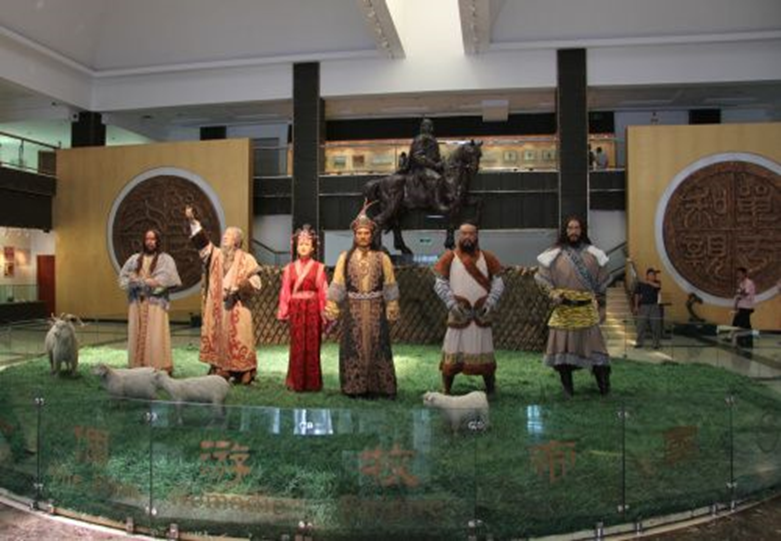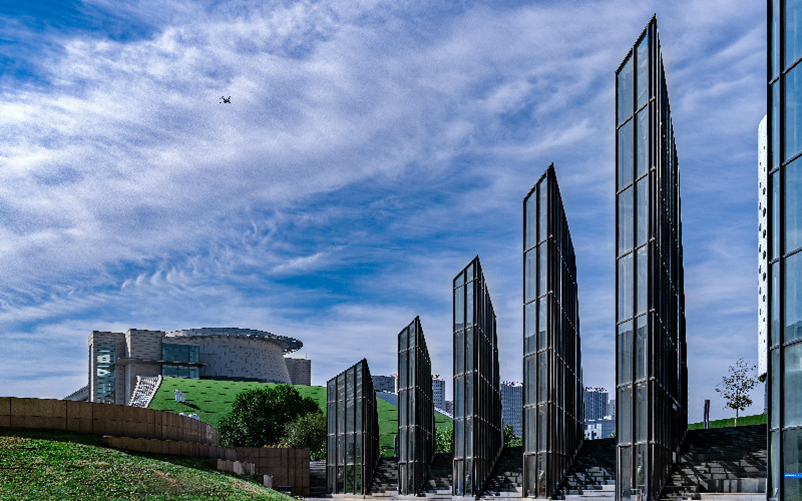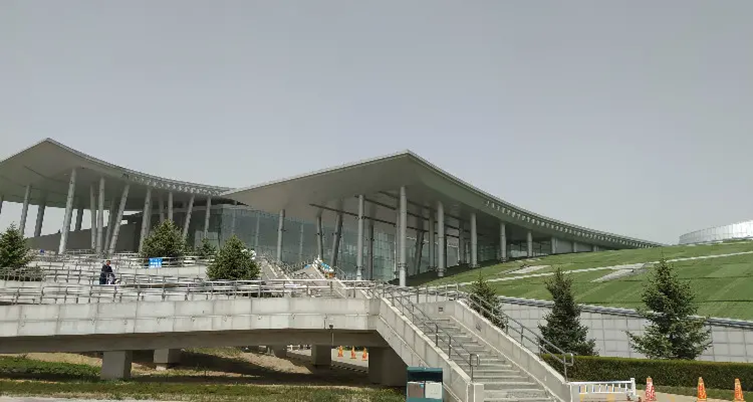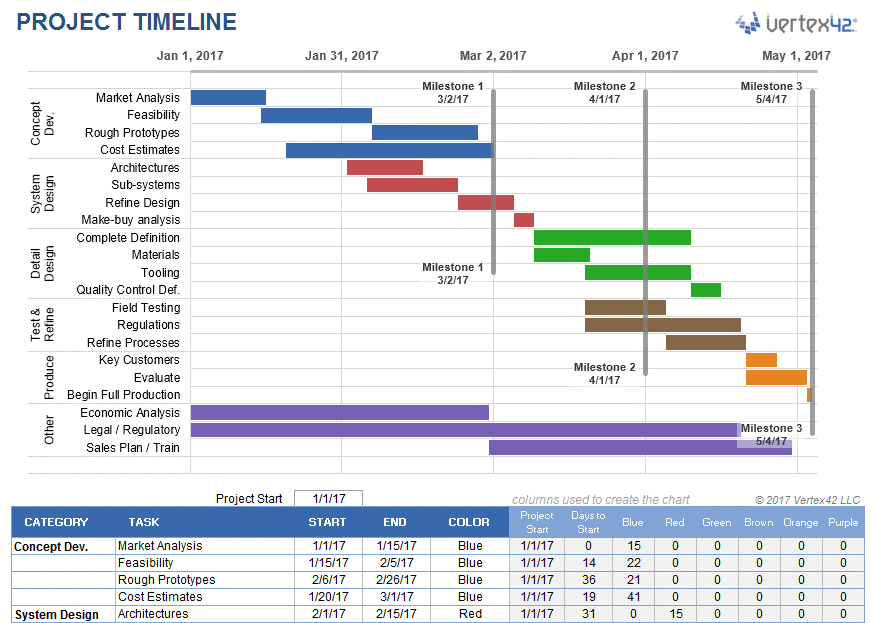Executive Summary
This project will be on the Inner Mongolia grassland exhibition. Art is the expression of human skill in visual form through painting or sculpture. Currently, art is facing various challenges that need to be solved. Such challenges include difficulties in finding aspirations, lack of sale plans, and challenges in exploring the target audience. To solve these problems, resilience, practice, getting a connection, and consistency in whatever an artist finds appealing. One of the solutions is attending an exhibition to see what others have done and showcase your talent. From the exhibition, someone might get lucky to find a customer. However, this assessment will not be a showcase, but the team plans to look at the artifacts already displayed in the museum.
Introduction
This report covers what has already been studied in class from week one to week 18. The researcher will apply the case study of the Inner Mongolia grassland exhibition. The better part of this assignment will be planning and implementation. The planning comprises five parts: strategy, human resources, financial planning, physical arrangement, and part five, a sample Gantt chart. The implementation will consist of four parts: registration, visual design, procedure, and cocktail party. Each of the sections listed above will further be divided into subsections. Most of the subsection will lie under the planning. However, since they are many, the research will look at the summary of each, and the insignificant parts will be skipped or combined with others.
Project Overview
The project’s requirements were assessed in a meeting where all members were present. After conducting an online survey and investigating recent art events, the Inner Mongolia grassland exhibition was the most suitable. This project will mainly involve visiting the Inner Mongolia Museum. Since the place isn’t very far from Beijing, only one day will be set for traveling. I request the management to facilitate the team that will be consolidated transport. Also, a facilitation fee for accommodation is required since the team will rest before proceeding to the exhibition. Entrance fees, meals, and miscellaneous fees are required. In summary, the team will need to be facilitated with transport, entrance, accommodation, food, and miscellaneous fees.
Background
Inner Mongolia is located in Hohhot in China. Inner Mongolia is the heart of art in China. It has several artistic, historical sites such as Inner Mongolia Museum and Mongolia Art Theatre. In the recent past, Inner Mongolia grassland has been affected by degradation (Li et al., 2012). Further studies show that the primary cause of degradation is overgrazing, especially in the pastoral region of Inner Mongolia (Li et al., 2012). To prevent the degradation, the government has put several policies to intervene in herders’ use of the grassland by setting the maximum number of livestock allowed in the grassland (Fang and Wu, 2022).
When it comes down to it, the history of Inner Mongolia during the last hundred has been essentially a story of Sinification. On the one hand, a massive influx of Han Chinese immigration has reduced the Mongol population in their own country to a minority of roughly 20% (Iredale et al., 2015). On the other hand, as has been the case with other minority peoples in China and abroad, the distinctive identity of the Mongols has been rapidly fading, particularly in urban areas, much like that of other minority peoples (Irgengioro, 2018). Many individuals now speak and read Chinese instead of Mongolian, and many have adopted Chinese names, clothing, and other cultural markers (Iredale et al., 2015). If you had gone to the Inner Mongolian city of Hohhot ten years ago, you would have found it to be very similar in appearance to a dozen or more Chinese cities of approximately the same size.
As a result, it may come as a surprise that, during the last decade, Hohhot’s cityscape has taken on a public Mongol character that sets it apart from other Chinese cities (Abrahms, 2018). As indicated previously, this new public face of Mongol identity does not entail a return of Mongol nationalism. Instead, it indicates a taming of ethnicity by the forces of tourism and the market as a result of processes of nationalization and globalization that have taken place in recent decades. Inner Mongolia, in the shape of the city of Hohhot, has played a range of roles in the development of the town (Abrahms, 2018). As a result of their success in altering Hohhot’s cityscape and luring internal tourism, the Inner Mongolian authorities have begun planning new initiatives to capitalize on the region’s distinct cultural identity. According to one official, it is dependent on the cultural resources, cultural climate, and cultural level of a city to determine whether or not it can compete (Han, 2011). The author says that creating a culturally distinctive city is vital for competing globally. As a result, they began to speak of a regional cultural sector that would be formed to bolster the culture-based economy of the Autonomous Regional Government (Han, 2011). According to an editorial published in the Inner Mongolia Daily Newspaper, developing the cultural industry is a critical component of the regional economy as it “is an important path to building a socialist culture in the market economy and meeting people’s spiritual needs; it is also a new and growing aspect of the development of an economics-oriented society.” There is a strong sense of domestic competition for commercialized culture, which has grown sharp. The cultural industry of our region must be developed and strengthened if we are to remain competitive in the future. Otherwise, [our] rich cultural riches may be “taken” by others. In August 2006, the newspaper began publishing a column devoted to Steppe Culture. Even though the declarations and reports were full of hyperbole and unproven links, they were generally positive in assessing ethnic culture.
A theme park dedicated to the Mongol people’s culture and history manifests this emergent cultural industry (Abrahms, 2019). In July 2006, the Mongol Customs Park, which is located on the outskirts of Hohhot and has been designated by the Chinese government as a priority tourist project, opened its doors. It has been developed into an AAAA-rated tourism site with a total investment of 4.5 million yuan. An AAAA tourism site has been identified as one of the region’s best-built and most economically favorable destinations. This is the “golden title” if you are looking for tourism attractions. Statues of historical personalities, Mongol armies, and Mongol imperial camps models are among the park’s attractions. Residents believe that the Inner Mongolia park was established purely to attract visitors. It is merely a means of raking in money from tourists, primarily foreign tourists while providing little for locals in a city with minimal green space.
Inner Mongolia Museum is a four-stories building covering a large piece of land (Shan, 2011). Within the four stories, three are exhibition halls. With the significant resources, which comprises ancient and current biology fossils, historical relics, and ethnic cultural relics, Inner Mongolia Museum displays a grassland culture exhibition series with basic and thematic displays (Xue, 2005). It has a total of fourteen display areas. To begin with, the second floor it four primary displays, namely: Prehistoric World, Broad Plateau, Treasures Underground, and Shenzhou Spacecraft, which show the development of Inner Mongolia’s grassland culture (Shan, 2011). The Third has four displays primary displays. The first one is named ‘The Power of the Grassland,’ the second one, ‘The Proud Son of Heaven on the Grassland,’ the third one is ‘The Customs of the Grassland,’ and the fourth one is ‘The Beacon Fire on the Grassland.’ The basic displays on the third floor depict the development of the grassland culture over the ancient ages, the modern times, and contemporary times (Hansen, 2012). These displays are easily understandable as they are briefly and dynamically exhibited. The fourth and also the last floor is the fourth floor. It consists of six thematic displays. The six displays are as follows; The Sunrise on the Grassland, Knights of Cloud and Wind, Costumes on the Grassland, The Melody under the Sky, The Magnificence of the Grassland, and The Remaining Treasure on the Ancient Road. Each of the thematic displays highlights a good point of the prairie culture.
Inner Mongolia Museum has more than 100,000 artifacts, classified into three main categories: ethnic history, cultural relics, and land fossils. Each of the categories has a significant quantity of artifacts (Shan, 2011).
Galleries of Inner Mongolia Grassland Museum
After conducting online research, the members found the Inner Mongolia museum to have some of the best collections of artifacts that the team will rejoice to see.

Figure 1: A rare case of art within the Inner Mongolia Grassland

Figure 2: Inner Mongolia walls

Figure 3: Inner Mongolia Museum

Figure 4: A collection of ceramic pieces of Chinese go game in Liao dynasty

Figure 5; Gold ornament
Planning
Having looked at the background of the study and the history of the study area, the research moved to the specific parts of an art project which included planning. Planning is generally making arrangements regarding the activities required to achieve the desired goal (Parke, 2018). Through planning, the goals of this project can be identified. The first section of planning is strategy. Strategy is part of planning that involves the management taking action to attain the organization’s objectives. In this case, the organization refers to the school of art. Visiting a cultural museum will play a vital role in the school of art, and the institution management should support the chosen team by facilitating the fees required to make the project a success. The strategy involves a strategic planning process. It should tell the team where it is going and what should be done to get there. The institution has supported the art students in the past, and for that, the project members and the school of art appreciate the facilitations done in the past. However, due to continued challenges facing artists in our institutions and globally, it requires motivation to outdo the challenges mentioned earlier (target market, sale plan, and finding aspirations). Through the exhibition, some of the team members will find their aspirations, and who knows, they might be able to find the target market for their art materials.
The strategy involves strategic analysis of an organization’s external and internal environments (Kaletnik and Lutkovska, 2020). For instance, an art report should have aims, objectives, mission, vision statement, and social responsibilities. Also, a strategy for marketing and promotion, target market, event survey, type, and scope, among others, should be well designed. SWOT analysis is vital for identifying the strength, weaknesses, opportunities, and threats of the project. Since some of the parts of this planning part have already been looked at, let’s look at the objectives and mission statement. The objectives of attending this Inner Mongolia Grassland Exhibition are to get in touch directly with the target audience to showcase the brand and for free media publicity. Attending this exhibition has several significances, one of them mentioned being the former statement. Secondly, it promotes cost-effective marketing, i.e., instead of someone having to spend a lot of money on advertising and promoting their products, the exhibition provides free publicity and room to showcase whatever you are offering to the audience. Also, some people get lucky and close deals, i.e., sell the product to the target audience during the exhibition. In other terms, exhibitions allow the selling of art materials. Art is about creativity, and through creativity, innovation occurs, and new products are developed. Through an exhibition, someone gets to launch a new product to the market. An exhibition provides a receptive target market to introduce a new product and describe why is product is essential to them. Other importance of exhibition includes:
- Increasing brand awareness.
- Meeting/connecting with potential clients.
- Gaining insight into the industry.
To the students, exhibitions are designed to motivate them to think critically to solve societal problems and develop skills that will propel them for what awaits them in the future.
Project mission: To research, acquire, and apply knowledge in the art industry.
A SWOT analysis evaluates strengths, weaknesses, opportunities, and threats to a business entity (Gurl, 2017) or a project in this case. Strengths describe what the project is best at doing (Lee and Koo, 2013). ‘W’ in SWOT stands for weakness and it describes the factors that make it difficult to achieve the project’s optimum performance (Gupta, 2015). Opportunities are external factors that give the project a competitive advantage. Threats are factors that could probably harm the project. In this scenario, the strength and opportunities of this project lie in the benefits of attending the Inner Mongolia Grassland Exhibition. The weakness and threats lie in the people and products available at the exhibition. Since the benefits of attending an exhibition have already been described, let’s look at the threats and weaknesses. The threats may arise from the competition. The team will not be the only one attending the exhibition. It will face competition from other products with good presentation skills and standing proximal and visible.
Legislation
On the other hand, law also plays an important role in controlling the acknowledgement and safety of private and public property, and in enforcement of government interests in controlling expression. Through the enactment of terms and processes for protecting ownership and conservation of art, China’s legal regime sanctifies the scope and boundaries (the very identity) of art being protected. Regulations are enhanced to strengthen the management, protect the biological diversification and maintain regional ecological safety. Using this laws that are enforced the country, the artistic expression is embraced and conserved.
Human Resource
The second part of planning is the human resource. Human resource is about people (Armstrong and Brown, 2019). The human resource may include the project members and team members in this case. However, it will mainly revolve around team members since they are supposed to visit the Inner Mongolia Grassland Exhibition. The team will apply a divisional structure. The team will be created for this project. Since the team will consist of students from the school of art, there are not many employees apart from the educator(s) in charge. The other parts of human resources that could be applicable in this part of the project were a business or organization that could include a job description and personal responsibility, team recruiting advertisement, interview and evaluation, employment contract, and contact list.
Sponsorship
The third part is financial planning. The team members need to be facilitated. However, this part could be more relevant if it was a business project. The facilitation will not require sponsorship planning, sponsor recruitment and bidding, selection criteria, sponsorship proposal, and a list of accounts. The institution management will do the money allocation from the student affairs funds.
Nevertheless, it could be good to briefly look at the subsection of financial planning and what they entail. Sponsorship is a business relationship between two parties (sponsor) and another (beneficiary). The beneficiary receives support in the form of funding or other resources from the sponsor, who in return enjoys the commercial advantage for rights and association
Budgeting
Budgeting could also be done by first assessing our financial resources, determining the kind of expenses that will be encountered, setting goals, having a plan and tracking the progress of the team members. Through this, it will be easier to acquire various finances that are required.
Physical Arrangement
Part four of the planning involves physical arrangement. The venue will be Inner Mongolia Grassland. The suppliers of the services will be at the venue where they will show the art students around and explain to them in details about the place and beauty of it. The requirements for attending the exhibition will be general since the exhibition is within the country and involves a group of students. The booking will be done by the person in charge of the team. The following is a checklist of attending the Inner Mongolia Grassland Exhibition: Identity Card or Passport and other basic requirements.
Timeline and Gantt Chart
The fifth and last part of the planning process involves a timeline and Gantt chart, communication with stakeholders, running sheet, and risk management. A Gantt chart is a graph that shows the progress of a project across time. A Gantt chart shows the project schedule, time estimates, allocated project team members, task priority, and task dependency clearly and concisely. A Gantt chart is a more advanced project calendar and timeline form. This examination will look at a Gantt chart example. A project management timeline is a simple visual chart that illustrates the project’s activities in chronological order. Compared to a Gantt chart, it is easier to read and analyze. In addition, a sample project timeline will be used in this study.

Figure 6: A sample of a project timeline (Accessed from Jon Witttwer, 2013)
Communication with Stakeholders
Communication with stakeholders is another subsection. The project manager must work with the stakeholders closely. Stakeholders are relevant people affiliated with the project, and their opinion over the project affects its outcome. First, there is a need to establish ground rules for effective stakeholders’ communication, saving time. Obstacles that might hinder effective communication should be removed, and the project is finished on time to pave the way for assessment and other projects. Through effective stakeholders’ communication, meetings, newsletters, conference calls, and project summary progress reports could occur. The key stakeholders are the Board of Management and Art educators/supervisors in this case. There should be communication between them and the project members.
Running Sheet and Risk Management
The last bit of the fifth part of planning is the running sheet and risk management. A running sheet is a list of procedures or events organized in a temporal sequence, i.e., events are divided into segments, each showing the time that each segment will take to be complete, location, and responsibility. Risk management is the act of identifying, evaluating, and preventing risks that may alter the project’s desired outcome. The simple procedure of risk management is to identify the risk, analyze the risk, prioritize the risk, treat the risk, and monitor the risk.
Implementation
Implementation is the execution of the plan (Pruskova and Kaiser, 2019). In this case, it puts the steps in the planning process into action. An art project involves registration, visual design, procedure, and a cocktail party. The registration part comprises the registration form, registration satchel and contents, registration envelope, and resource analysis for the registration. Resource analysis involves the financials for the event, demographic and skill levels, physical availability (the tangible) and the intellectuals. Registration provides greater protection for the students during the exhibition of art at Inner Mongolia. Through this the students are guaranteed to have access to this facility and all its contents.
Visual Design
The second part, the visual design, consists of floorplan, logo, websites/social media design, recruiting exhibitors, advertising, printings, banners, tickets, uniforms, and guiding signs. Photography is less pure art form than painting and sculpture but its an important aspect in art (Simon Bowcock,2015). Visual design brings the important elements in a frame and highlights them to capture the attention of people. It helps in delivering your idea about the art and increases the impact of it.
Procedure
The procedure is the third part which involves a delegate checklist, exhibition list, event orders, seminar speaker profile, and security precaution. The importance of a procedure during an exhibition period is to make the artists’ ideas public, give the context of the space and the organizer of the event.
Cocktail Party
The last part is the cocktail party, which consists of the invitation letter, venue, menu, sponsorship presentation, timing, and visual/audio plays. A cocktail party describes the filtering out of a multiple of sounds in order to focus on a particular conversation (Colin Cherry, 1953). It involves tuning into a single voice and detecting objects of importance, while tuning out visual and auditory confusion. A good example is the viewing of artwork which requires attentive listening. During this party, artists are able to collect and process ideas and materials by listening to the different opinions been presented.
The implementation comes after the project has been accepted. This part has offered a brief description of what is involved in each of the implementation steps since the project has not been accepted yet.
Conclusion
In conclusion, this is a report of an art project. It is a case study of an Inner Mongolia Grassland Exhibition. Inner Mongolia Grassland has fourteen displays: eight basic and six thematic displays. This project will involve students visiting the Inner Mongolia Museum. Art students are encouraged to showcase their artistic works and look at the presented items during the exhibition.
References
Abrahms-Kavunenko, S. (2019). Enlightenment and the Gasping City. Cornell University Press.
Armstrong, M., & Brown, D. (2019). Strategic Human Resource Management: back to the future. Institute for Employment Studies reports, 1-36.
Fang, X., & Wu, J. (2022). Causes of overgrazing in Inner Mongolian grasslands: Searching for deep leverage points of intervention. Ecology and Society, 27(1).
GURL, E. (2017). SWOT analysis: A theoretical review.
Han, E. (2011). The dog that hasn’t barked: assimilation and resistance in Inner Mongolia, China. Asian Ethnicity, 12(1), 55-75.
Hansen, V. (2012). The Silk Road. Oxford University Press.
Iredale, R., Bilik, N., & Fei, G. U. O. (2015). China’s Minorities on the Move: Selected Case Studies: Selected Case Studies. Routledge.
Irgengioro, J. (2018). China’s national identity and the root causes of China’s ethnic tensions. East Asia, 35(4), 317-346.
Janiah, S. (2019). STRATEGIC MANAGEMENT EFE-IFE MATRIX, SWOT ANALYSIS, COMPETITIVE PROFIL MATRIX (CPM) DAN BCG MATRIX PADA PT YAMAHA. Jurnal Ekonomi Manajemen Sistem Informasi, 1(2), 188-196.
Kaletnik, G., & Lutkovska, S. (2020). Innovative Environmental Strategy for Sustainable Development. European Journal of Sustainable Development, 9(2), 89-89.
Li, S., Verburg, P. H., Lv, S., Wu, J., & Li, X. (2012). Spatial analysis of the driving factors of grassland degradation under conditions of climate change and intensive use in Inner Mongolia, China. Regional Environmental Change, 12(3), 461-474.
Parke, M. R., Weinhardt, J. M., Brodsky, A., Tangirala, S., & DeVoe, S. E. (2018). When daily planning improves employee performance: The importance of planning type, engagement, and interruptions. Journal of Applied Psychology, 103(3), 300.
Pruskova, K., & Kaiser, J. (2019). Implementation of BIM Technology into the design process using the scheme of BIM Execution Plan. In IOP Conference Series: Materials Science and Engineering (Vol. 471, No. 2, p. 022019). IOP Publishing.
Shan, D. (2011). Chinese vernacular dwellings. Cambridge University Press.
Xue, C. Q. (2005). Building a revolution: Chinese architecture since 1980 (Vol. 1). Hong Kong University Press.
 write
write